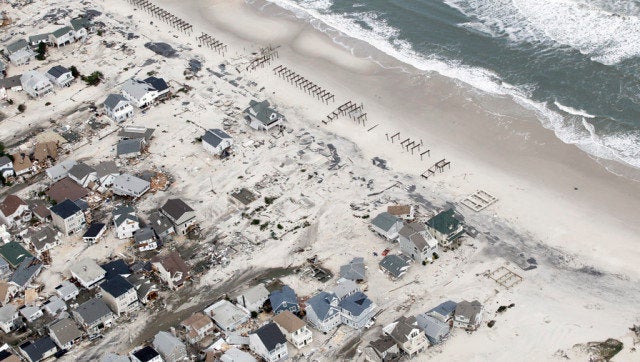
Last week, I saw firsthand the damage and destruction that devastated the shore. New Jersey institutions like the Seaside Heights' boardwalk decimated, and homes ripped from their foundations. Neither pictures nor press accounts can do justice to what it looks like there and in other parts of the state.
While Hurricane Sandy may have hit us hard, she didn't knock us out. Our state is showing the world the tremendous good, unbelievable kindness and never-quit spirit of New Jerseyans that sometimes can only arise after such a painful and devastating crisis.
But if the storm has taught us anything, it is that the New Jersey we grew up in is gone, both literally and figuratively. When we begin experiencing 100-year storms seemingly every year we must take a serious look at both our existing infrastructure and how we rebuild our state. That means not rushing through a bunch of well-meaning legislation that has long term, unforeseen consequences. Our goal must be to rebuild smart.
We can't simply put everything back the way it was; otherwise, we will end up right where we started once the next Sandy hits. There are some things we can do immediately. For instance, the government can buy homes that are constantly and consistently flooded. We waste too much money trying to rehabilitate these kinds of homes only to see Mother Nature always win in the end. Residents in Sayreville can tell you all about this. Many of them just want out, and it makes sense for the government to do so.
Buyouts are just one measure though and many questions still remain. How do we resolve issues of sand dunes on the barrier islands? Where along the barrier islands should we rebuild -- does it make sense to put everything back the way it was? How do we ensure that homes which survived the flooding are properly inspected so that we don't see mold issues popping up in three or four years? How can we update our power grids so that we know exactly where people have lost power? What issues need to be resolved so we aren't seeing power outages lasting, in some cases, two weeks?
These questions do not have easy answers, which is why rebuilding New Jersey will require time, patience and thorough examination of the issues. That is one of the main reasons why I, along with Minority Leader Kean, are having the State Senate hold hearings across the state on Sandy. These hearings are not to point fingers or to place blame -- they are to find out what went right in terms of response to the storm, and to find out what went wrong so that we can take action to correct it. Moreover, we not only need to recognize the Herculean efforts of emergency responders, but also hear directly from them on what they need to help them do their jobs
We may not be able to gather all of the information we need from these hearings, but they will be a good start. From here, we will move forward with crafting legislation and policies that can help resolve these issues. We have to be smart about rebuilding the Jersey Shore because it is not only one of the country's most treasured natural resources, it is a key part of the state's economy. We realize time is a factor, but, again, this is about rebuilding smart, because we have to get this right. We have a unique opportunity here. Let us not squander it through haste. If we do this right, out of the destruction of Sandy will rise a new New Jersey; bigger, better and stronger than ever.